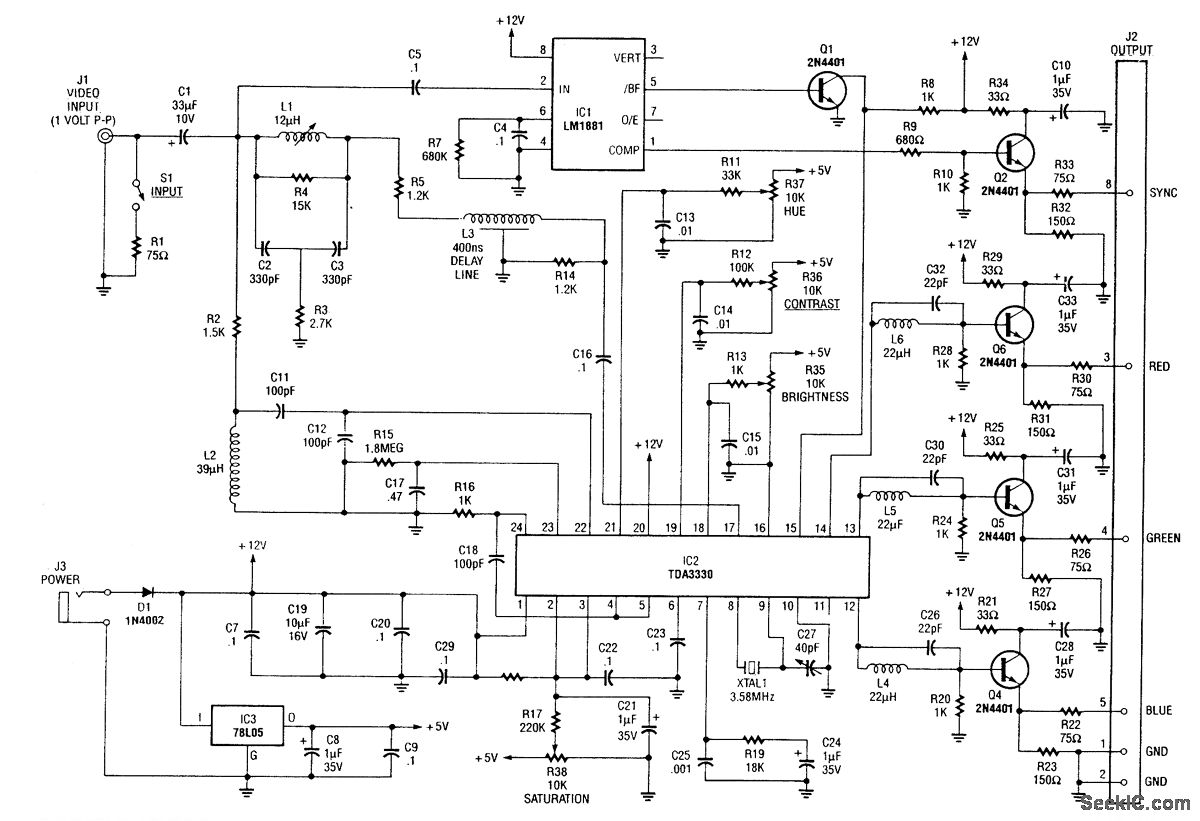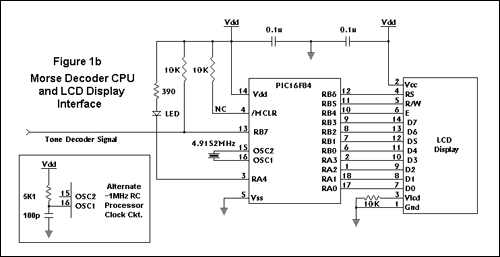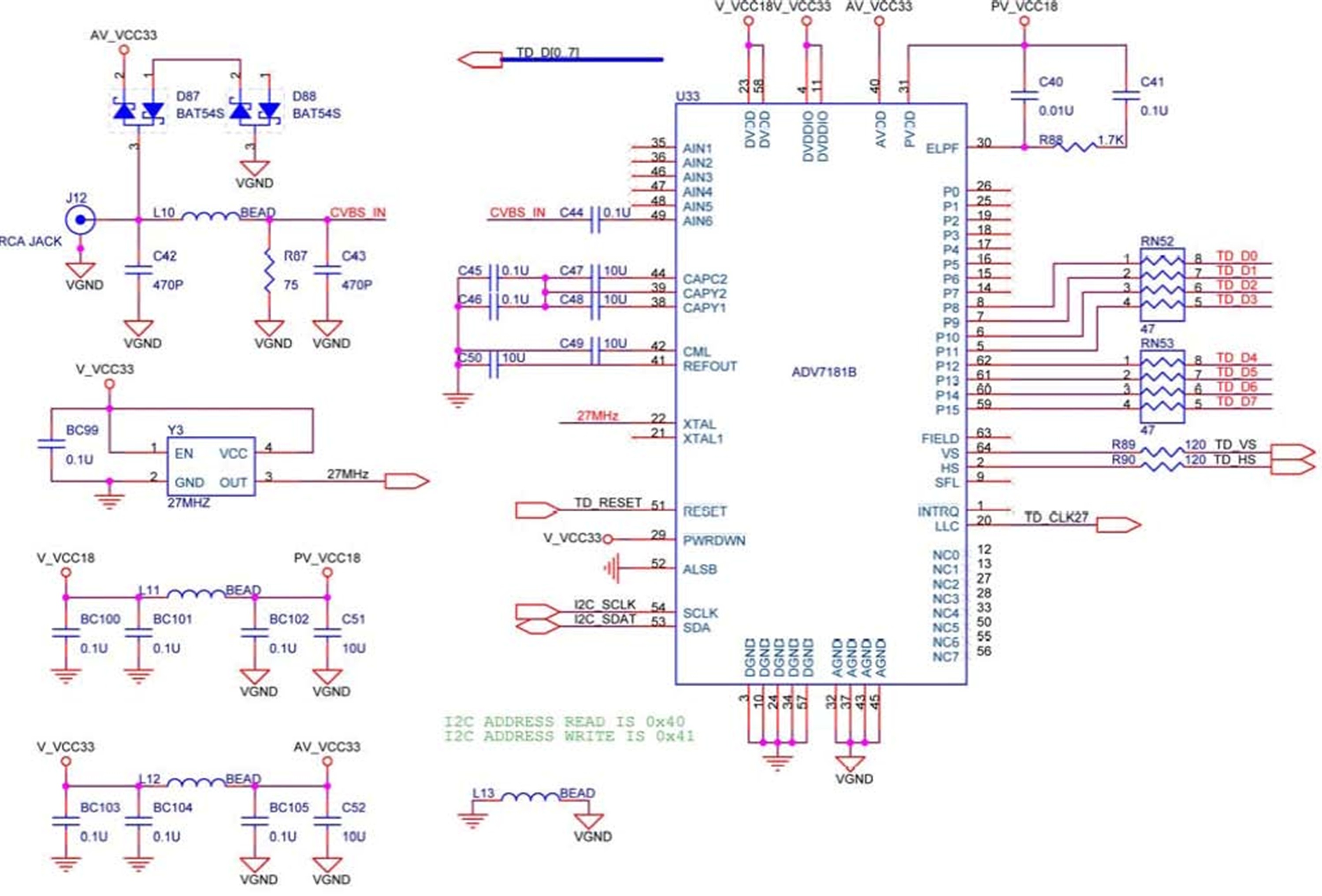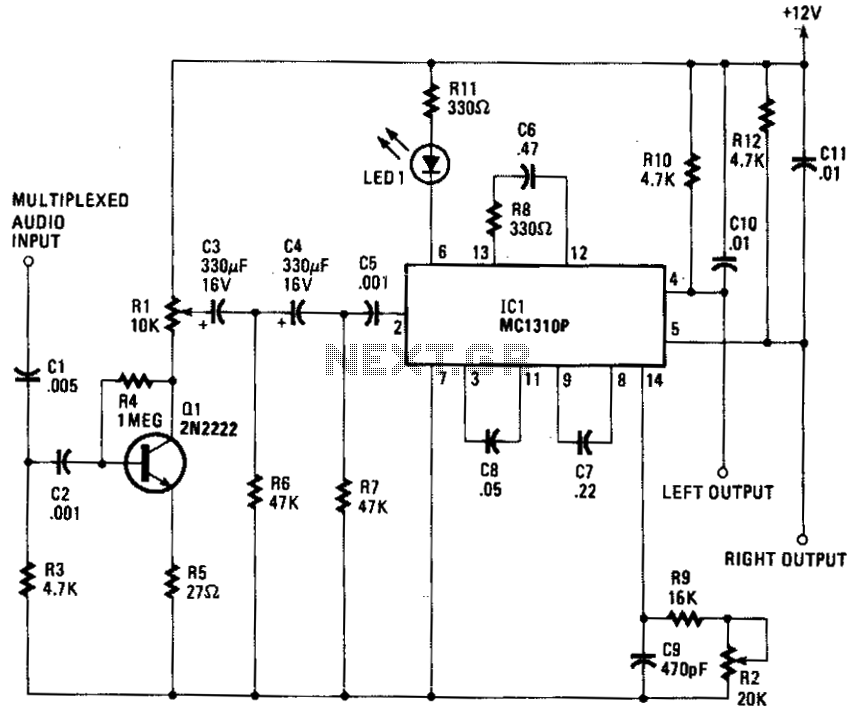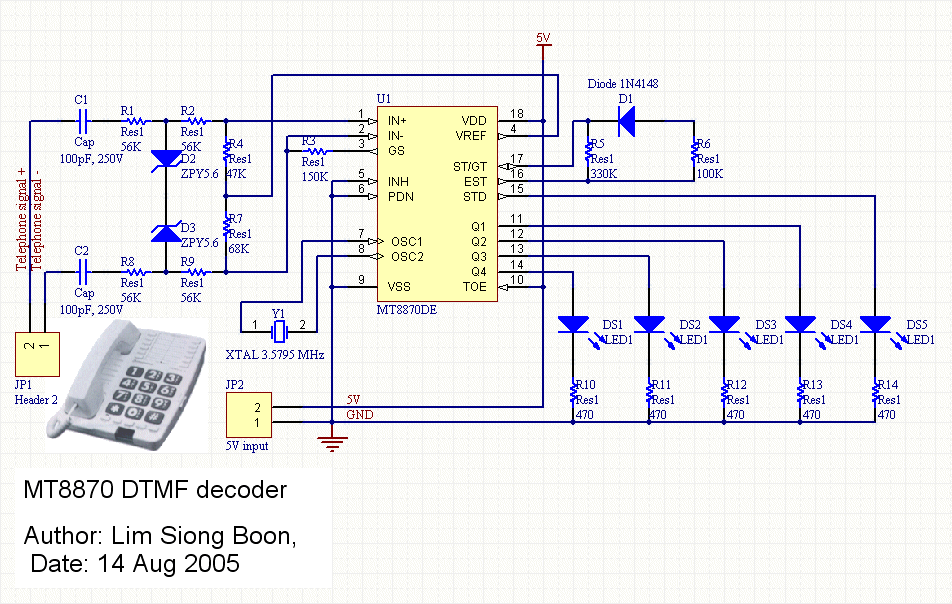
Ht48f06e Hopping Decoder
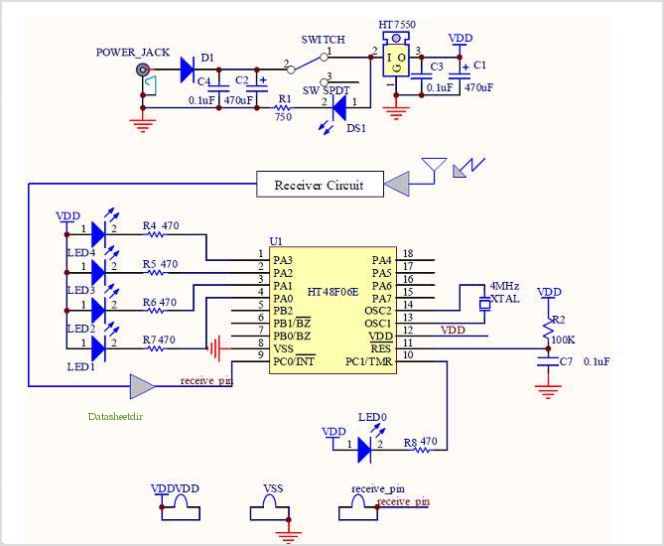
The Supertex HV440 is utilized for creating a pulse width modulated high voltage ring generator in telecommunication applications. The HV440 can function in both closed-loop and open-loop configurations. A closed-loop design, while more intricate, offers improved load regulation and lower total harmonic distortion (THD) compared to an open-loop design. This application note focuses on a closed-loop design. The output ring voltage is 62 VRMS at 20 Hz, with load capacities of 5 RENs and 20 RENs. A minimum output of 40 VRMS is necessary for the telephone to ensure effective ringing. Typically, ring generators produce a sinusoidal output, and common ringing frequencies include 20 Hz and 25 Hz. Telephone loads are expressed in RENs (ring equivalent numbers), where one North American REN is equivalent to 6930 in series with 8.0 µF. The ring generator must be capable of driving 5 RENs for a given telephone line. The integrated output MOSFETs within the HV440 can drive up to 5 North American RENs. For applications that require loads exceeding 5 RENs, the HV440 can also drive external Supertex MOSFETs TP2522N8 and TN2524N8 for loads up to 20 RENs. Complete schematics for both a 5 REN and a 20 REN ring generator, along with their respective bill of materials, are provided at the end of this application note. A low voltage reference sine wave signal is necessary to produce the output ringer signal. A Wien-Bridge Oscillator has been selected to generate the reference sine wave, as illustrated in Figure 2. The Wien-Bridge Oscillator was chosen for its simplicity. Alternative methods for generating the reference sine wave include using sine wave generator integrated circuits such as the Exar XR-2206, Micro Linear ML2035, or Philips PCD3311C.
The Supertex HV440 serves as a critical component in the design of high voltage ring generators, particularly in telecommunications where reliable signaling is essential. Its dual operational modes—closed-loop and open-loop—allow for flexibility in implementation, with the closed-loop mode being preferable for applications demanding high fidelity and stable output. The design specifications indicate that the HV440 can generate an output voltage of 62 VRMS at a frequency of 20 Hz, which is suitable for most standard telecommunication devices.
The load handling capability of the HV440 is particularly noteworthy, as it can support up to 5 RENs with its integrated MOSFETs. For applications requiring additional load capacity, external MOSFETs such as the TP2522N8 and TN2524N8 can be employed, thus extending the load handling capability to 20 RENs. This adaptability makes the HV440 a versatile choice for various telecommunication setups.
The sine wave generation is a crucial aspect of this application. The Wien-Bridge Oscillator is a preferred choice due to its straightforward design and effectiveness in producing a stable sine wave output. This oscillator configuration utilizes resistors and capacitors to create an oscillation that is both frequency stable and low in distortion, ensuring that the output signal meets the necessary requirements for ringing.
In conclusion, the Supertex HV440, with its ability to generate high voltage ring signals in a controlled manner, along with the flexibility of external MOSFET integration, positions itself as a robust solution for telecommunication applications. The schematics and bill of materials provided in the application note further assist engineers in implementing this technology effectively.The Supertex HV440 is used for implementing a pulse width modulated high voltage ring generator for telecommunication applications. The HV440 CAN operate in both closed-loop or open-loop. A closed-loop design is more complex but provides better load regulation and lower THD compared to an open-loop design.
In this application note, a closed-loop d esign is discussed. The output ring voltage is 62VRMS at 20Hz with load capabilities of 5 RENs and 20 RENs. The telephone must see a minimum of 40VRMS, otherwise ringing is not guaranteed. Ring generators are typically sinusoidal. Common ring frequencies are 20Hz and 25Hz. Telephone loads are rated in RENs (ring equivalent number). One North American REN is equivalent to 6930 in series with 8. 0 µF. For a given telephone line, the ring generator must be able to drive 5 RENs. The output MOSFETs integrated in the HV440 CAN drive up to 5 North American RENs. For applications requiring loads greater than 5 RENs, the HV440 CAN also drive external Supertex MOSFETs TP2522N8 and TN2524N8 for loads of up to 20 RENs. Complete schematics for a 5 REN and a 20 REN ring generator with their bill of materials CAN be found at the end of this application note.
Sine Wave Reference A low Voltage Reference sine wave signal is required to generate the output ringer signal. A wien-bridge Oscillator was chosen to generate the reference sine wave as shown in Figure 2. The Wien-Bridge Oscillator was selected for its simplicity. Other ways of generating the reference sine wave are by using sine wave generator integrated circuits such as an Exar XR-2206 a Micro Linear ML2035, or a Philips PCD3311C.
🔗 External reference
The Supertex HV440 serves as a critical component in the design of high voltage ring generators, particularly in telecommunications where reliable signaling is essential. Its dual operational modes—closed-loop and open-loop—allow for flexibility in implementation, with the closed-loop mode being preferable for applications demanding high fidelity and stable output. The design specifications indicate that the HV440 can generate an output voltage of 62 VRMS at a frequency of 20 Hz, which is suitable for most standard telecommunication devices.
The load handling capability of the HV440 is particularly noteworthy, as it can support up to 5 RENs with its integrated MOSFETs. For applications requiring additional load capacity, external MOSFETs such as the TP2522N8 and TN2524N8 can be employed, thus extending the load handling capability to 20 RENs. This adaptability makes the HV440 a versatile choice for various telecommunication setups.
The sine wave generation is a crucial aspect of this application. The Wien-Bridge Oscillator is a preferred choice due to its straightforward design and effectiveness in producing a stable sine wave output. This oscillator configuration utilizes resistors and capacitors to create an oscillation that is both frequency stable and low in distortion, ensuring that the output signal meets the necessary requirements for ringing.
In conclusion, the Supertex HV440, with its ability to generate high voltage ring signals in a controlled manner, along with the flexibility of external MOSFET integration, positions itself as a robust solution for telecommunication applications. The schematics and bill of materials provided in the application note further assist engineers in implementing this technology effectively.The Supertex HV440 is used for implementing a pulse width modulated high voltage ring generator for telecommunication applications. The HV440 CAN operate in both closed-loop or open-loop. A closed-loop design is more complex but provides better load regulation and lower THD compared to an open-loop design.
In this application note, a closed-loop d esign is discussed. The output ring voltage is 62VRMS at 20Hz with load capabilities of 5 RENs and 20 RENs. The telephone must see a minimum of 40VRMS, otherwise ringing is not guaranteed. Ring generators are typically sinusoidal. Common ring frequencies are 20Hz and 25Hz. Telephone loads are rated in RENs (ring equivalent number). One North American REN is equivalent to 6930 in series with 8. 0 µF. For a given telephone line, the ring generator must be able to drive 5 RENs. The output MOSFETs integrated in the HV440 CAN drive up to 5 North American RENs. For applications requiring loads greater than 5 RENs, the HV440 CAN also drive external Supertex MOSFETs TP2522N8 and TN2524N8 for loads of up to 20 RENs. Complete schematics for a 5 REN and a 20 REN ring generator with their bill of materials CAN be found at the end of this application note.
Sine Wave Reference A low Voltage Reference sine wave signal is required to generate the output ringer signal. A wien-bridge Oscillator was chosen to generate the reference sine wave as shown in Figure 2. The Wien-Bridge Oscillator was selected for its simplicity. Other ways of generating the reference sine wave are by using sine wave generator integrated circuits such as an Exar XR-2206 a Micro Linear ML2035, or a Philips PCD3311C.
🔗 External reference

